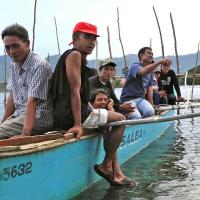Jackass Penguin
The jackass penguin is closely related to the temperate penguins of South America (the Humboldt penguin, the Galapagos penguin, and the Magellanic Penguin), and these four species are together known as the banded penguins. Jackass penguins lay clutches of two eggs in burrows that they dig out of the thick layers of guano (seabird droppings) … Read more



